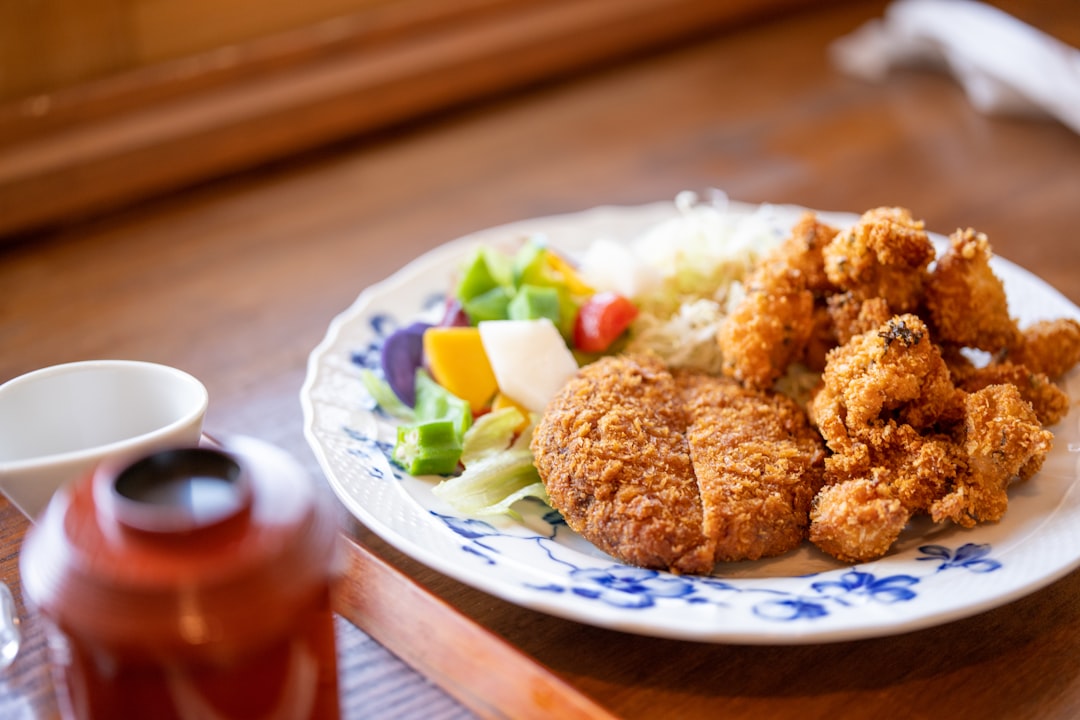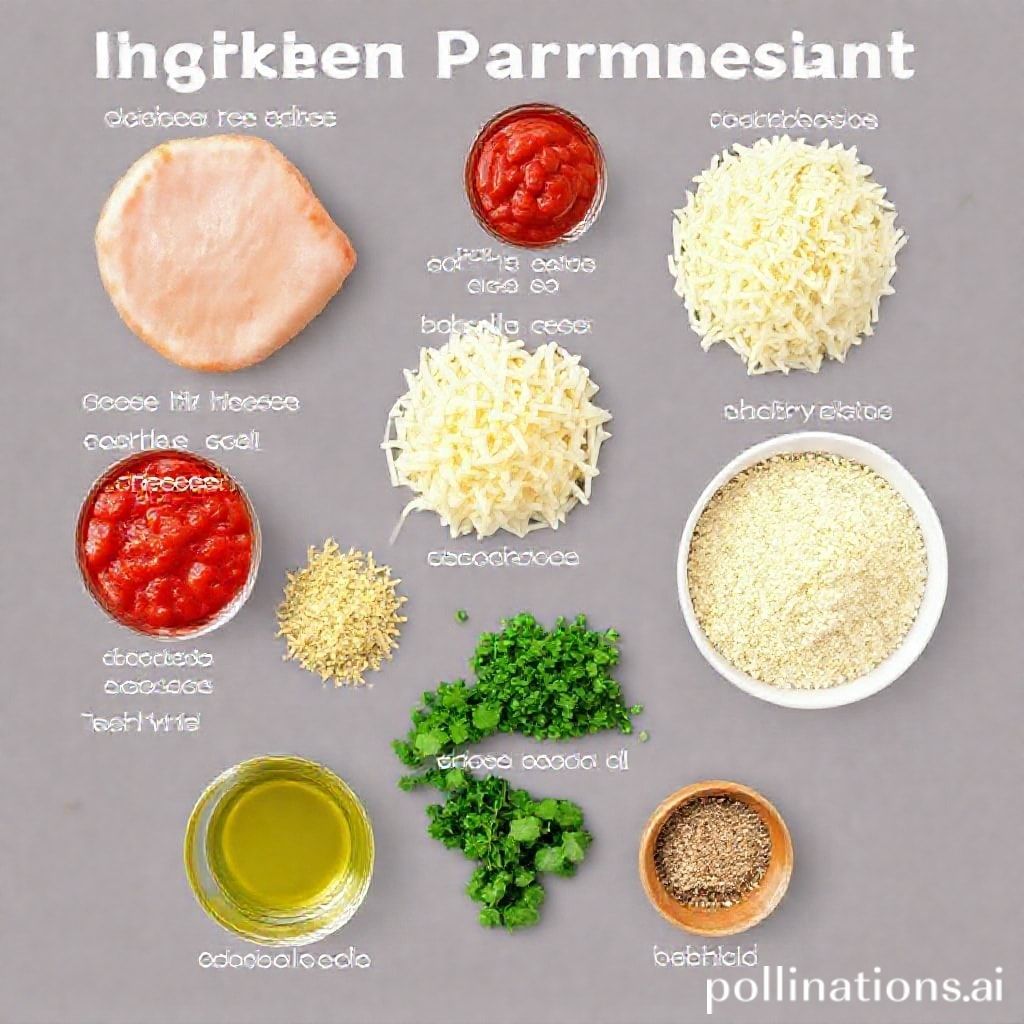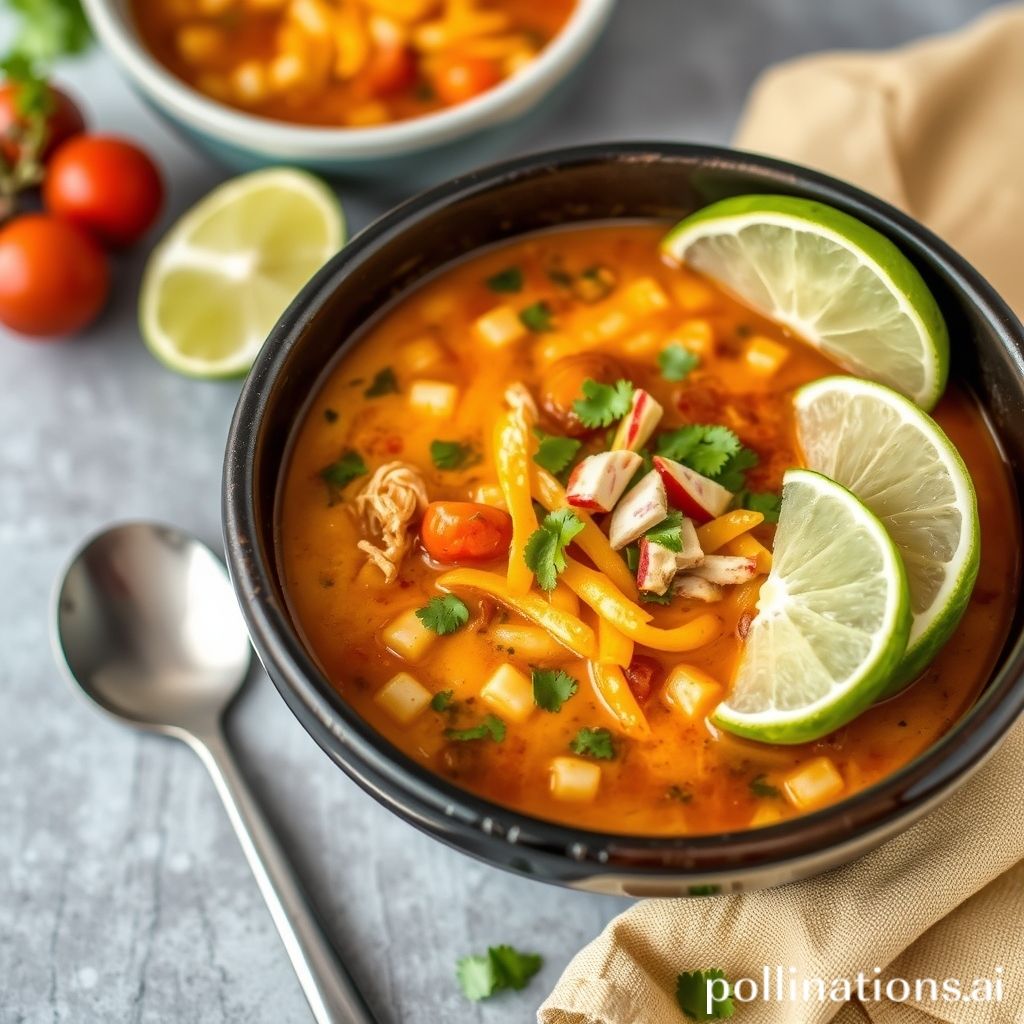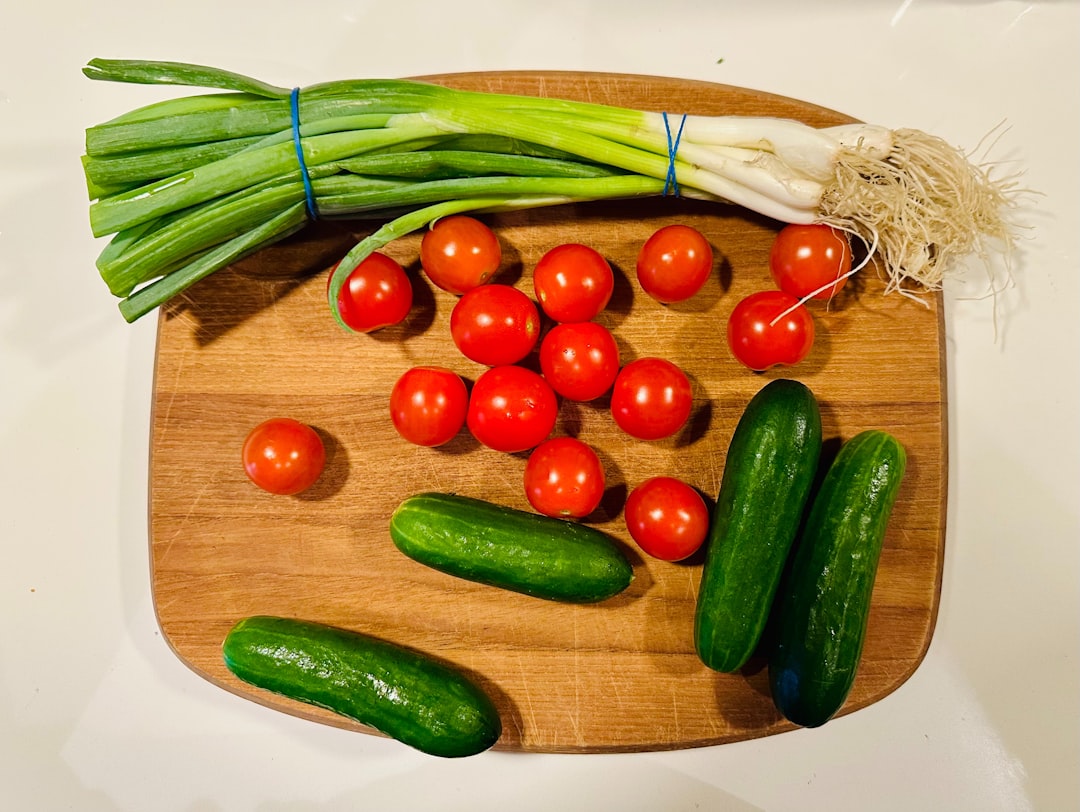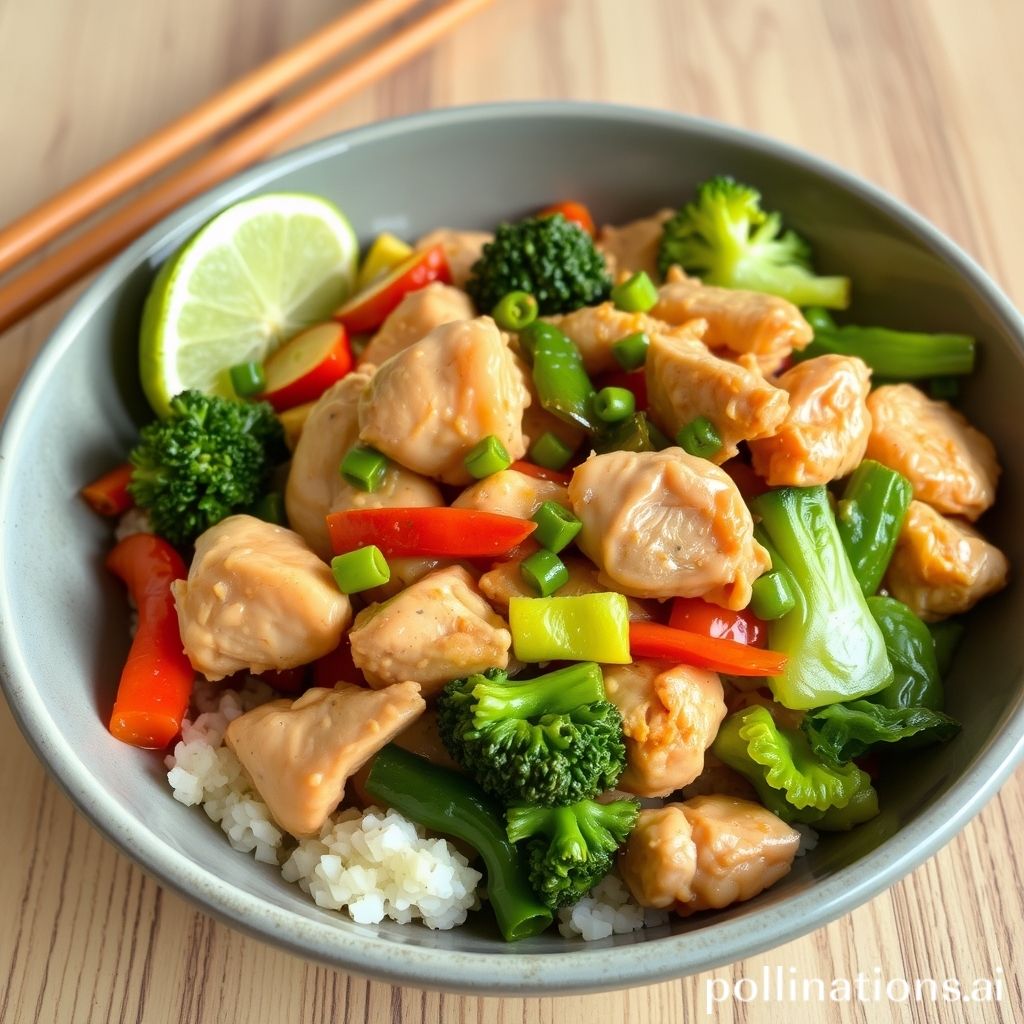Table of Contents
- Introduction
- Essential Ingredients for Teriyaki Chicken Stir-Fry
- Step-by-Step Preparation of Teriyaki Chicken
- Cooking Tips for Perfect Stir-Fry Texture
- Nutritional Benefits of Teriyaki Chicken Stir-Fry
- Popular Variations and Add-ons
- Conclusion
- Frequently Asked Questions
Introduction
If you’re looking to add a splash of excitement to your dinner routine, then mastering the art of Teriyaki Chicken Stir-Fry is your ticket to a culinary adventure! With its savory, sweet glaze and colorful blend of vegetables, this dish isn’t just a feast for the taste buds but also a visual delight.
Prepare to dazzle your dinners with the following tantalizing ingredients: 500g of skinless chicken thigh fillets, 1/4 cup of soy sauce, 2 tablespoons of mirin, 1 tablespoon of sugar, 1 tablespoon of ginger paste, 2 cloves of garlic minced, 1 tablespoon of vegetable oil, 1 cup of broccoli florets, 1 cup of sliced bell peppers, and 1/2 cup of sliced carrots. These star ingredients create the irresistible teriyaki sauce that will unite harmonious flavors for an unforgettable meal.
But this dish is more than just its ingredients. It’s about discovering the perfect timings, achieving that ideal balance of flavors, and unleashing your inner chef to stir-fry your way to a sizzling success. Ready to transform your kitchen into a culinary hotspot? Let’s dive into the art of Teriyaki Chicken Stir-Fry and embark on a journey where every stir and sizzle leads to a masterpiece.
Essential Ingredients for Teriyaki Chicken Stir-Fry
Creating a delicious Teriyaki Chicken Stir-Fry begins with the right ingredients that bring out the authentic flavors of this classic dish. At the heart of this recipe is chicken, typically boneless and skinless chicken breasts or thighs, which are preferred for their tenderness and flavor absorption. High-quality soy sauce is indispensable, lending its rich, umami base to the teriyaki sauce. To balance the savoriness, you’ll need a sweetener such as brown sugar, honey, or mirin, a sweet rice wine that also adds a subtly sweet note. For depth and complexity, fresh garlic and ginger are essential, imparting a warm, aromatic background.
Vegetables play a vital role in both flavor and nutrition. Common choices include bell peppers, broccoli, and snow peas, which add a crisp texture and vibrant color. Carrots and onions can also be included for added sweetness and crunch. Sesame oil is often used for stir-frying, enhancing the dish with its nutty aroma and taste, while sesame seeds serve as an optional garnish that adds a touch of elegance. Finally, cornstarch may be used to thicken the sauce, allowing it to cling perfectly to the chicken and vegetables for each delectable bite.
Step-by-Step Preparation of Teriyaki Chicken
Preparing Teriyaki Chicken Stir-Fry at home is a delightful experience that doesn’t require hours in the kitchen. To begin, gather your ingredients: boneless chicken breast, your favorite vegetables such as broccoli, bell peppers, and carrots, as well as soy sauce, honey, ginger, and garlic for the teriyaki sauce. Start by cutting the chicken breast into bite-sized pieces, ensuring they cook evenly.
Next, prepare the teriyaki sauce. In a bowl, mix together soy sauce, honey, freshly grated ginger, and minced garlic. If you prefer a thicker sauce, mix in a teaspoon of cornstarch. Set the sauce aside.
Heat a tablespoon of oil in a large skillet or wok over medium-high heat. Add the chicken pieces and cook until they are golden brown and thoroughly cooked. Remove the chicken from the skillet and set it aside. In the same skillet, add your selection of vegetables and stir-fry them until they are tender-crisp.
Return the cooked chicken to the skillet with the vegetables, pouring the teriyaki sauce over the mixture. Stir well to ensure everything is coated with the savory sauce. Allow it to simmer for a few more minutes, letting the flavors meld together perfectly.
Cooking Tips for Perfect Stir-Fry Texture
Achieving the perfect texture in a teriyaki chicken stir-fry involves mastering a few essential cooking tips. First, ensure your ingredients are cut uniformly to promote even cooking. Chicken pieces should be similar in size, and vegetables should be in bite-sized pieces.
Another crucial tip is to use a high smoking point oil such as canola or peanut oil, which allows you to cook at higher temperatures without burning. Preheat your wok or frying pan before adding any oil; this helps in searing the chicken and vegetables quickly, preserving their texture and flavor.
For the chicken, a quick marinade can enhance the taste and tenderness. Additionally, avoid overcrowding the pan; cook in batches if necessary. This ensures that each ingredient stir-fries rather than steams in its own moisture. Always keep stirring continuously to prevent burning and to achieve that signature crispy edge.
Finally, try adding the sauce towards the end of cooking. This technique allows the flavor to coat the ingredients without making them soggy. By following these tips, you’ll be able to create a teriyaki chicken stir-fry that maintains a delightful balance between tender chicken and crisp, vibrant vegetables.
Nutritional Benefits of Teriyaki Chicken Stir-Fry
Teriyaki Chicken Stir-Fry is not only a delicious meal but also packed with various nutritional benefits that contribute positively to a balanced diet. This dish typically features chicken as a primary ingredient, which is an excellent source of lean protein. Protein is essential for muscle growth and repair, as well as maintaining a healthy immune system. Chicken also provides essential vitamins and minerals such as B vitamins, phosphorus, and selenium.
The inclusion of vegetables in a Teriyaki Chicken Stir-Fry further enhances its nutritional profile. Vegetables like bell peppers, broccoli, and carrots are rich in vitamins A, C, and K, and provide an abundance of dietary fiber, which is vital for good digestive health.
The teriyaki sauce, often made from soy sauce, mirin, and sugar, adds flavor but should be used in moderation due to its sugar and sodium content. Opting for low-sodium soy sauce variants can help manage sodium intake. Additionally, the antioxidants found in some of the sauce ingredients, such as ginger and garlic, add to the health benefits by helping to fight inflammation and boost immunity.
Overall, Teriyaki Chicken Stir-Fry can be a nutritious and flavorful addition to any meal plan when prepared with fresh ingredients and enjoyed as part of a balanced diet.
Popular Variations and Add-ons
Teriyaki Chicken Stir-Fry is a versatile dish that invites countless variations and add-ons. By tweaking the basic recipe, you can create a meal that caters to diverse tastes and dietary needs. A popular variation involves substituting chicken with tofu or shrimp, offering a delightful twist for vegetarians and seafood lovers. Additionally, experimenting with different vegetables can elevate the flavor profile. Seasonal veggies like bell peppers, broccoli, or snap peas add vibrant colors and a satisfying crunch, making the dish more nutritious.
For those who crave a hint of sweetness, incorporating pineapple chunks or slices of apple can enhance the tropical flavor, balancing the savory notes of soy sauce. Adding nuts such as cashews or almonds provides a crunch and enriches the dish with healthy fats. If you prefer a little heat, sprinkle some chili flakes or incorporate sliced jalapeños to spice things up.
Enhancing the dish with various noodles or rice options is another avenue to explore. Whole grain rice or quinoa are excellent choices for added fiber, while soba or udon noodles can introduce a new texture. These options ensure that your Teriyaki Chicken Stir-Fry remains exciting and adaptable, appealing to a broad range of palates.
Conclusion
Mastering the art of Teriyaki Chicken Stir-Fry opens up a realm of culinary possibilities, blending savory flavors and vibrant textures into one exquisite dish. With the right ingredients and expert tips at your disposal, you can effortlessly recreate this beloved recipe in your own kitchen, bringing the sizzling delight of teriyaki right to your dinner table. Whether you are drawn to its nutritional benefits, the simplicity of its preparation, or the endless potential for personalization, Teriyaki Chicken Stir-Fry holds something for everyone. Let this dish inspire you to embrace the joy of cooking, exploring the endless variations that cater to all tastes and dietary preferences.
And if you’re eager to further expand your culinary prowess, why not delve deeper into the world of chicken recipes? The Chicken Bible offers a treasure trove of 500 recipes, including effortless dinners, succulent stir-fries, and much more. Don’t miss this chance to say goodbye to boring chicken dishes and infuse your cooking with new excitement. Order your copy today and transform your kitchen adventures into a feast of delicious discovery!
